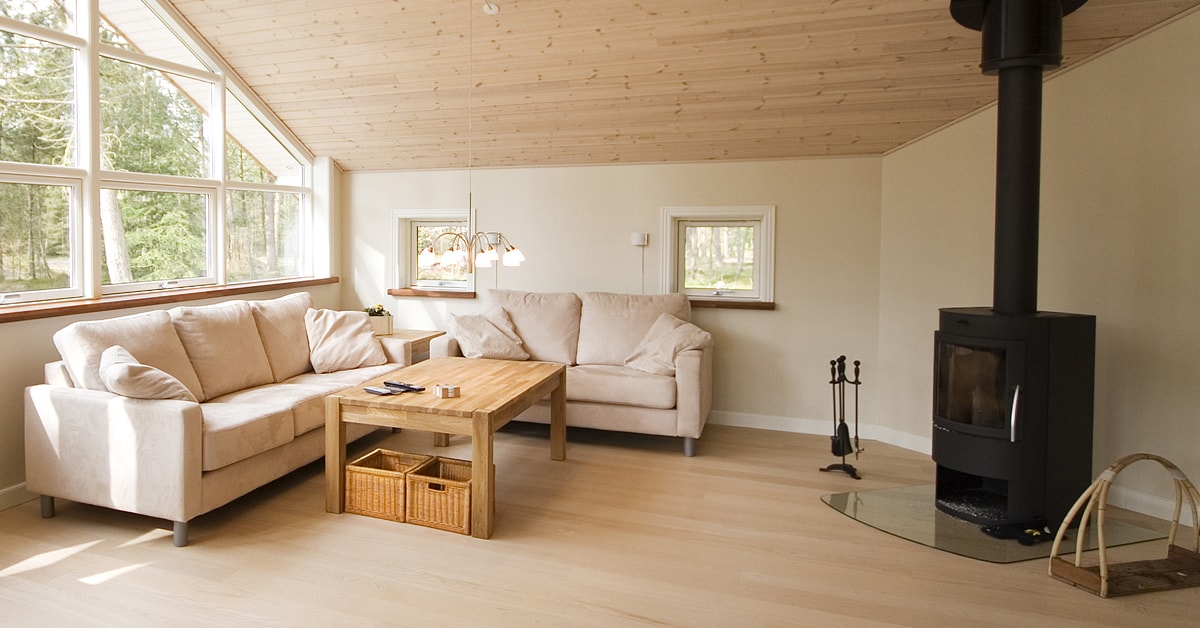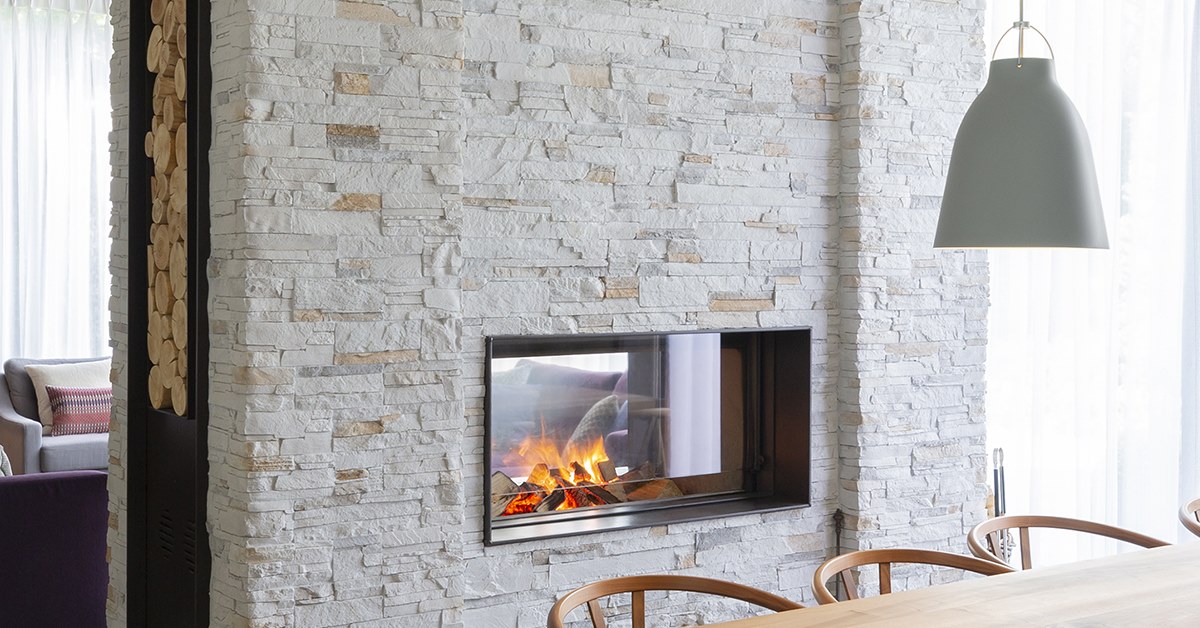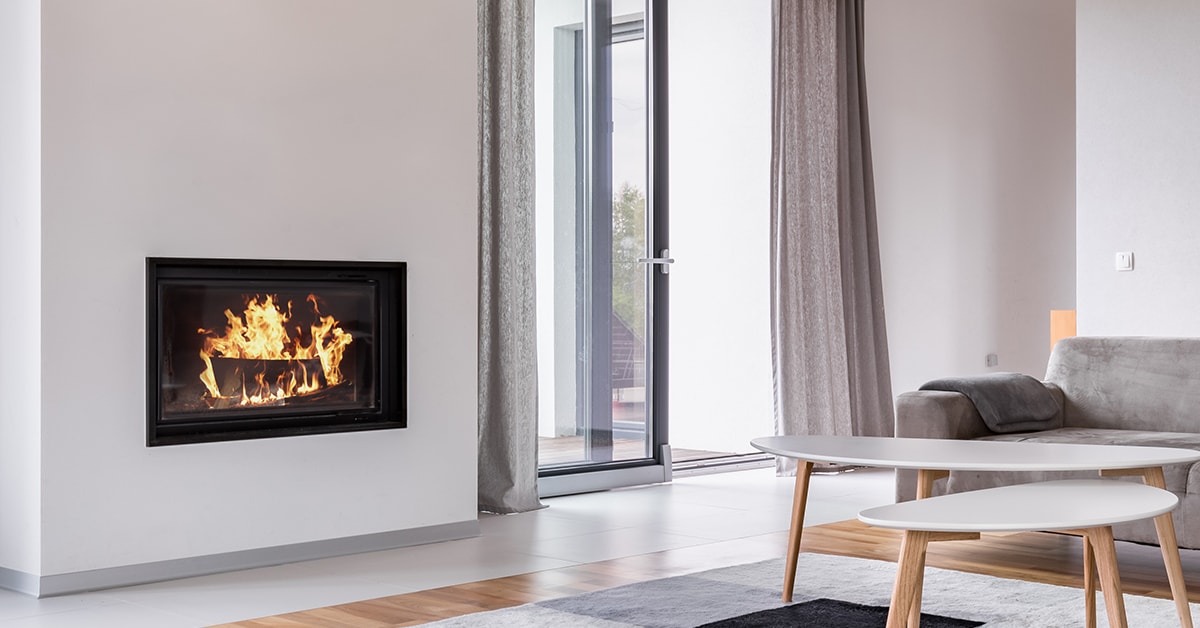
Updated on October 27, 2023
How to Choose the Ideal Wood Stove for Your Home
A great choice as a standby heater, wood stoves provide comfort and a cozy ambiance to any space. Find out what you need to know about choosing, installing, and maintaining a picture-perfect wood stove.
Wood Stove Categories
Wood stoves are divided into two main types depending on the kind of fuel they use: firewood or pellets. Both log-burning and pellet-burning stoves are capable of providing supplementary heat in an energy-efficient manner, helping you save on the cost of home heating. However, they are usually intended for slightly different purposes.
- Log-Burning Stoves: Producing heat by burning firewood, log wood stoves are made to provide quicker heat on a more occasional basis.
- Pellet-Burning Stoves: Producing heat by burning pellets commonly made of compressed sawdust, pellet stoves are intended to provide more consistent heat over a longer period. They also usually come with a hopper—a component which allows them to operate automatically.
Another difference is that pellet stoves can be vented either horizontally or vertically, while traditional wood stoves require vertical venting and an existing chimney or fireplace.
You can also get densified wood logs. They’re known for lasting longer and producing more heat than traditional logs, making them an eco-friendly choice. However, they cost more.
Pro Tip
Wood Stoves and Pellet Stoves Compared
Characteristics | Ease of installation | Efficiency | Green taxation | Costs | Installation conditions | Maintenance cost |
Wood stove | High | Moderate | High | High | Moderate | High |
Pellet stove | Moderate | High | Moderate | Moderate | Moderate | Low |
Characteristics | Ease of installation | Efficiency | Green taxation | Costs | Installation conditions | Maintenance cost |
Wood stove | High | Moderate | High | High | Moderate | High |
Pellet stove | Moderate | High | Moderate | Moderate | Moderate | Low |

Wood Stove
Benefits
- Easy way to create a cozy ambiance
- Enjoyment of watching the flames
- Enjoyment of the earthy wood scent
- Quick supplementary heating
- More efficient than fireplaces
Drawbacks
- The need to obtain and stack wood logs
- It can often be tricky to light a fire
- Requires regular maintenance
- May allow heat to escape when not in use
- Only a few hours of supplementary heat in the case of a power outage
Safety considerations
- May overheat from continuous use and poor upkeep
- Creosote accumulation from damp logs can increase the risk of chimney fires

Pellet Stove
Benefits
- Pellets are manufactured specifically for more efficient combustion
- Automatic feeding can allow continuous use for up to 20 hours
- Only a vent is required—no need for a traditional chimney
- Pellets are more convenient to handle and store
- Reduced humidity levels
- Low emissions
Drawbacks
- Cannot function with any fuel source besides pellets
- Requires regular maintenance
- Noisier operation than wood stoves with certain models
- Flames may not look as natural as a log fire
Safety considerations
- A risk of toxic fumes
- It is highly recommended that you also install a carbon monoxide detector
Environmental Impact
As long as the fuel used in a wood stove is sustainably sourced, its operation will be essentially carbon neutral. This is because trees recycle CO2 as they grow, releasing oxygen and incorporating the carbon into their structure. When a tree is burned for fuel, the amount of CO2 that is released into the atmosphere is similar to how much would be released from the tree’s natural decomposition.
However, wood burning can have a negative impact on air quality if it creates a smouldering fire with blue-grey smoke. The best way to avoid this is to upgrade your wood stove to a new, cleaner-burning model that is EPA or CSA certified. Newer models can help cut emissions by as much as 90%. Using dry, clean logs and fuel and selecting a wood stove that is the right size for your home will help reduce emissions as well.

Useful Accessories
Stove tools
Ash bucket
Ash vacuum
Stove fan
Stove gloves
Log holder
Wood Stove Installation
- The right wood stove
- The necessary chimney system components
- A stove pipe to connect your stove to the chimney
Where to install a wood stove
A wood stove can be installed just about anywhere as long as there is adequate space for the stove itself and as long as the chimney can be correctly routed. The stove pipe should also have room to run straight up.
Selecting the right heat output
Ensuring safe installation and use
Installing both a smoke detector and a carbon monoxide detector in or near the room where your wood stove is located is also highly recommended. If there is ever an issue with combustion, you want to be alerted to it right away.
Maintenance Tips
- Scoop or vacuum the ash on a regular basis to prevent mess and increase the volume of fuel you can use.
- Perform a thorough cleaning of your wood stove and its venting at least twice a year.
- Check the flue pipes and chimney for any signs of deterioration, such as bulges, corrosion, and rust stains.
- Clean the glass door with a damp cloth or specialized stove glass cleaner to remove any ash or stains.
- Inspect the gaskets around the door and any other components and replace them when they begin to show signs of damage and wear.
- Have your wood stove professionally serviced at least every two years to make sure it is operating correctly and to extend its lifespan.















